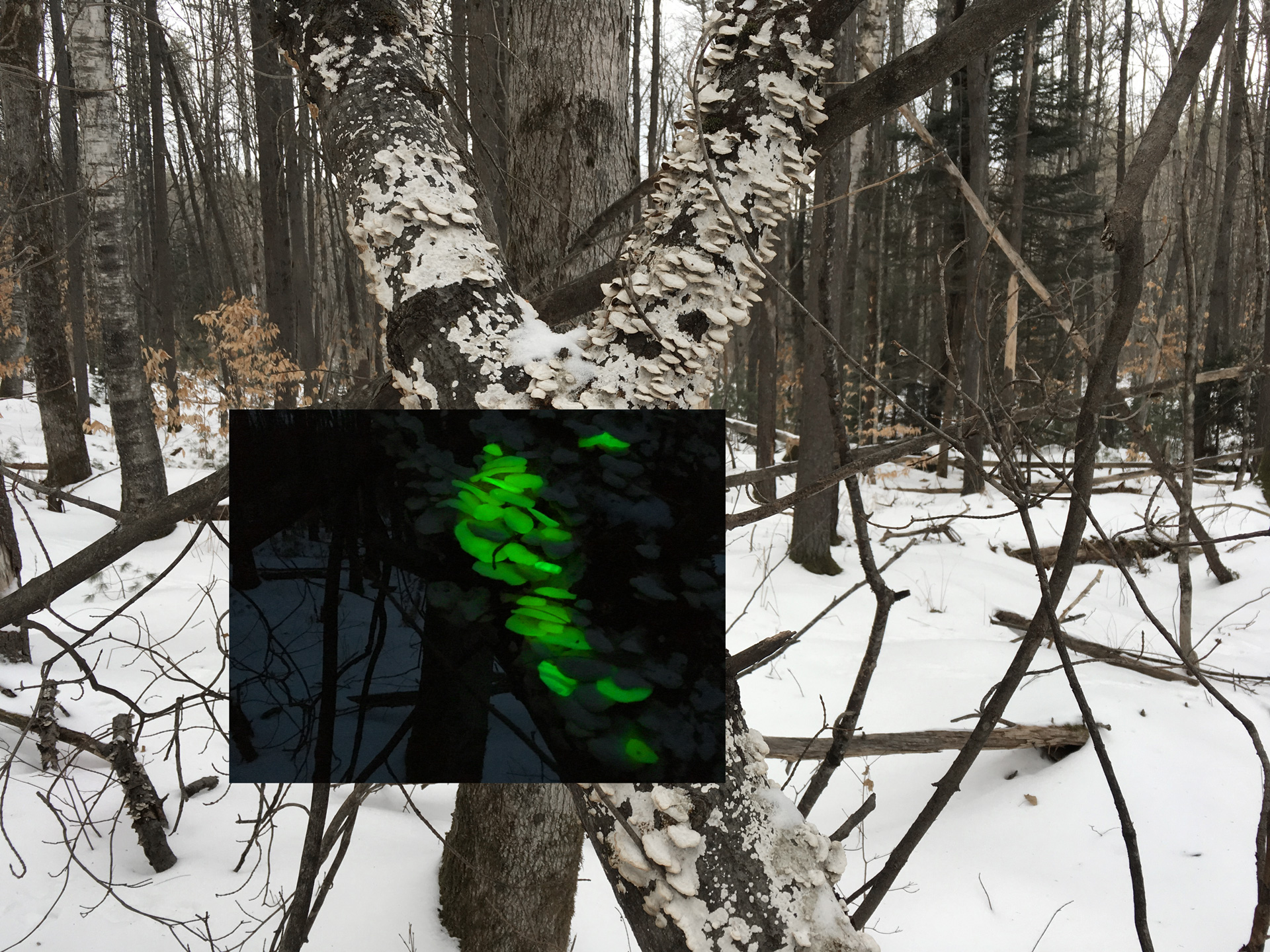
For millennia, living organisms have served as a potent model for emulation in biomimetic architecture and design. Our early work also dabbled with biomimicry; but, since in 2002, we’ve been examining how biology might surpass its traditional role as a means to merely inspire architecture, and instead become a means to make architecture. Hence, we’ve explored applications for many new biomaterials and biocomposites that are made of organisms, cells, and their biomolecular parts (e.g., DNA, peptides, proteins).
The Mycoluminescence Project is a prime example of our work with functionalized biomaterials that are created to perform a particular task. The project consists of biocomposites that affix to trees like growing fungi, but emit light. They were installed deep in the woods, where the dark sky helps our eyes perceive their humble glow at night. The project is designed to safely guide us through the forest, as a wayfinding system for remote regions, but it also demonstrates a way of thinking about temporary architectural installations that biodegrade, and perhaps even nourish the environment, instead of having to be demolished and removed as waste.









